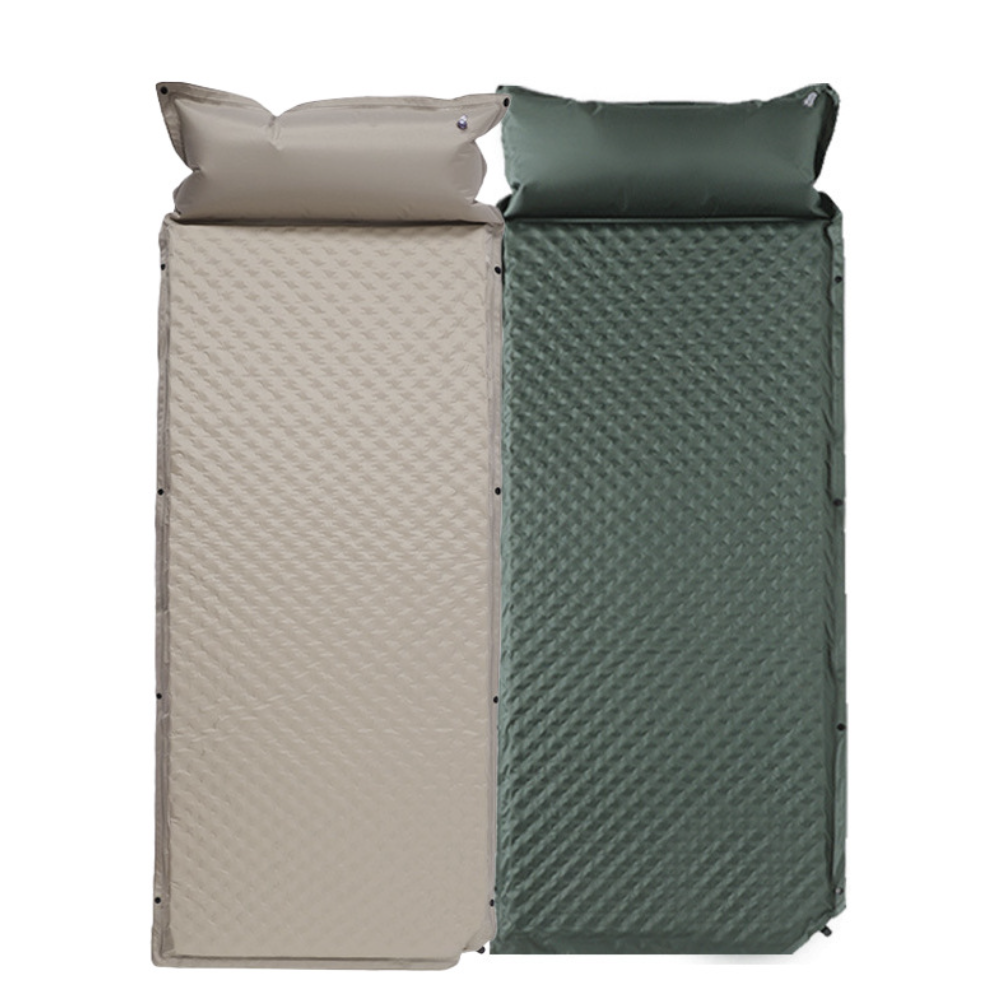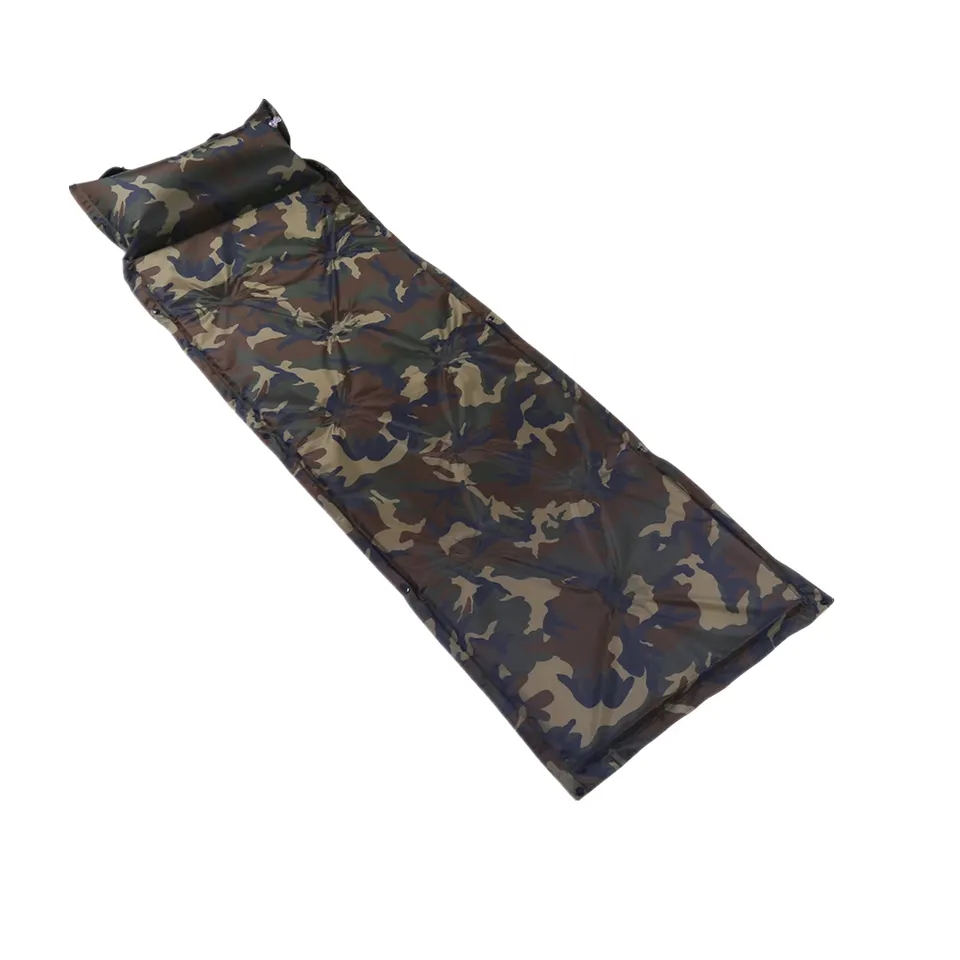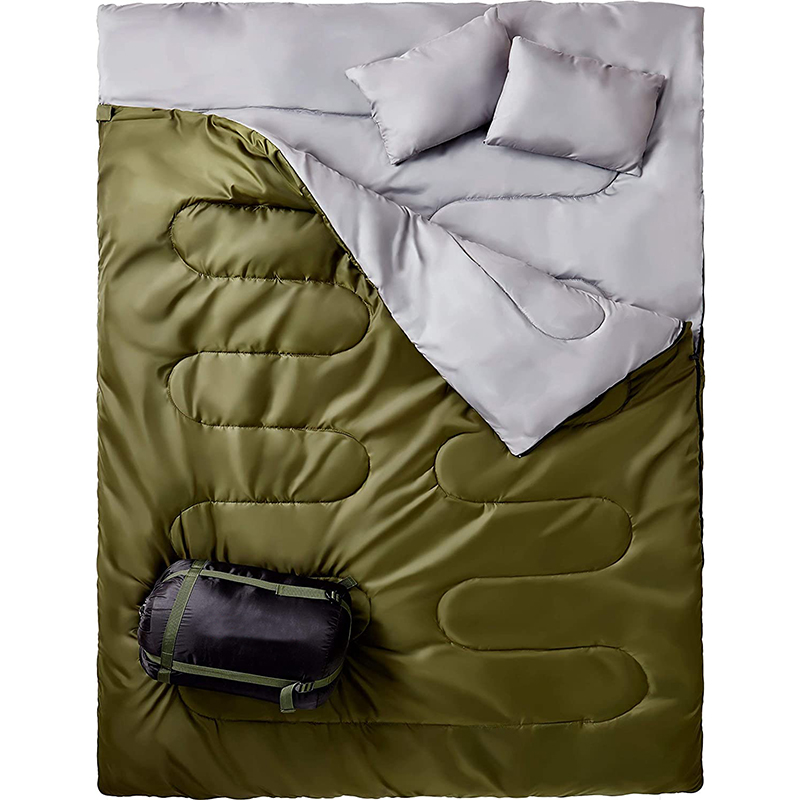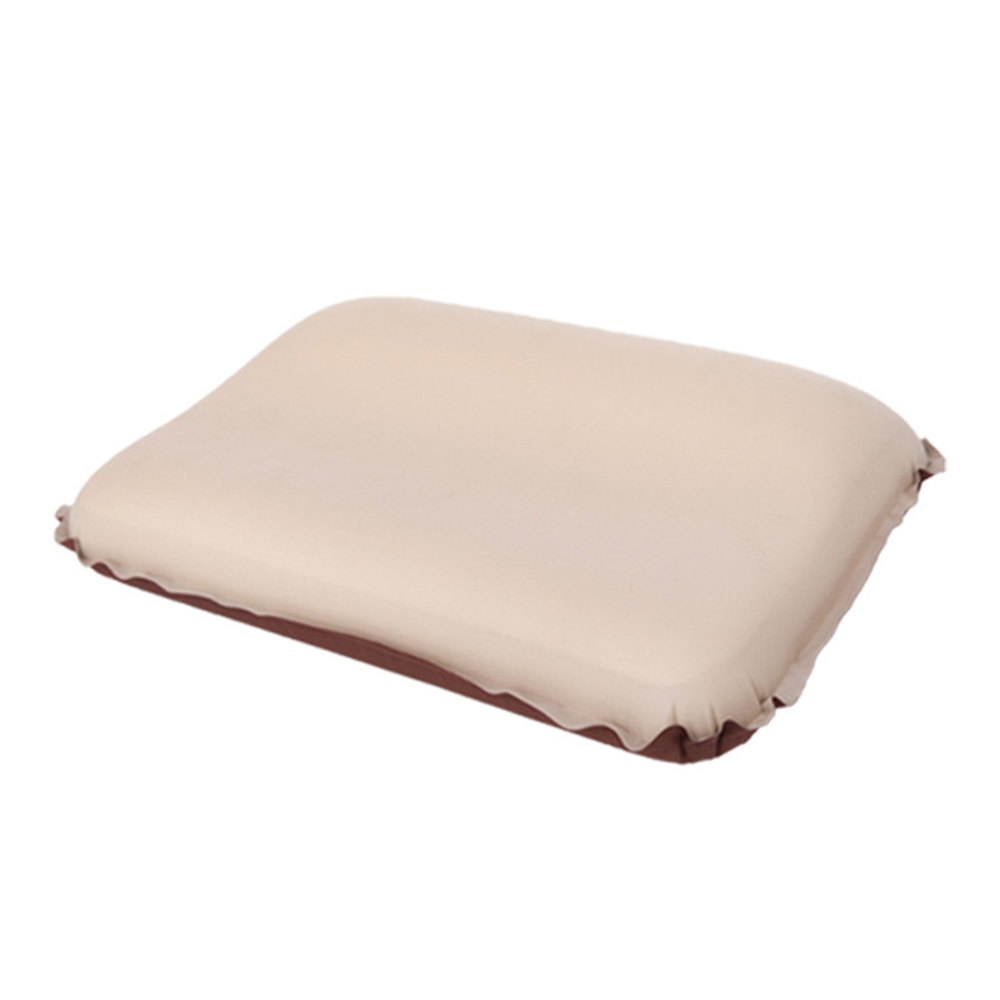Sleeping pads play two very important roles in getting a solid night's sleep in the great outdoors: cushioning and insulation. While it might seem like having a comfortable surface to sleep on is a pad's most useful function, its ability to keep you warm throughout the night is often more important.
Here’s how to choose a sleeping pad for camping or backpacking:
- Types of sleeping pads: Learn about the three basic types of pads and how they perform: air, self-inflating, and closed-cell foam.
- Intended use: Decide which activity your pad is for: backpacking, car camping, winter camping, etc.
- Warmth (R-value): A pad’s ability to resist heat loss to the ground is measured as R-value—higher R-values are warmer.
- Sleep system: Being comfortable at a particular temperature depends on many other variables, including the temperature rating of your sleeping bag. Correctly pairing your pad and bag in your sleep system is key to staying warm.
- Features: Decide which other features are most important to you: weight, cushioning, size, inflation ease, and more.
Try them in person: To make your final decision, try to test a few different pads. Lie down in your typical sleeping position and move around as you normally would. Seeing pads in person also allows you to easily assess weight and packed size.
Types of Sleeping Pads
Air Pads
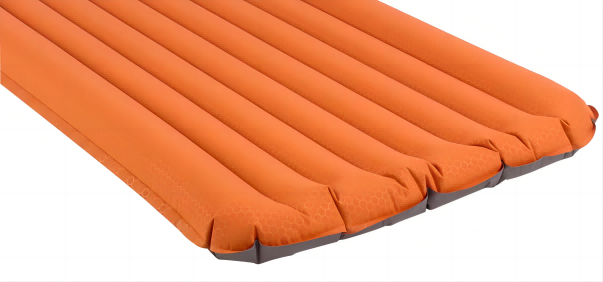
Air pads come in a wide variety of styles, from lightweight ones ideal for backpacking up to extra-thick ones that are great for glamping. Most air pads now contain insulation and/or reflective materials to increase warmth. Many air pads feature alternative inflation methods so you can save your breath.
Pros: Air pads are incredibly comfortable and lightweight, and the most compact type of pad when packed. You can customize the firmness of the mattress by releasing or adding air from the valve(s). Designs and intended end uses vary widely. Be sure that the one you pick has an R-value suited for the conditions you expect.
Cons: Air pads tend to be more expensive the lighter and more compact they are. They can be punctured or ripped (this is most common when sharing a tent with dogs), but field repairs are possible if you carry the appropriate patch kit.
Air pads tend to feel as if they are losing air if the outside temperature fluctuates, so check and adjust the firmness right before you go to sleep. Moisture from breath can get trapped inside, which may eventually lead to degraded performance or bacterial or mold issues. Using a hand pump will help prevent moisture buildup, as will storing your pad unrolled with the valve(s) open.
Some air pads make a loud crinkly sound when you move around, which can be annoying to yourself or your tent mates. This is another good reason to test pads out in a store.
Self-Inflating Pads
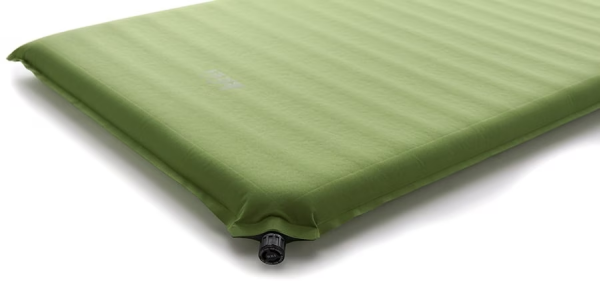
Self-inflating pads offer a combination of open-cell foam insulation and air. Opening the valve(s) allows the foam to expand and brings in air automatically. Some are specifically designed for backpacking and can be folded lengthwise and then rolled up to fit inside your pack. Others are designed for car camping and are rolled up without folding. Self-inflating pads offer you a broad range of options for warmth, size, and cost.
Pros: They’re comfortable and reasonably compact, they offer excellent insulation, and you can adjust their firmness by adding or releasing air. They’re generally more durable than air pads.
Cons: They’re heavier and more expensive than simple foam pads, and not as compact as air pads. They can be punctured or ripped, though field repairs are not difficult.
Closed-Cell Foam Camping Mats
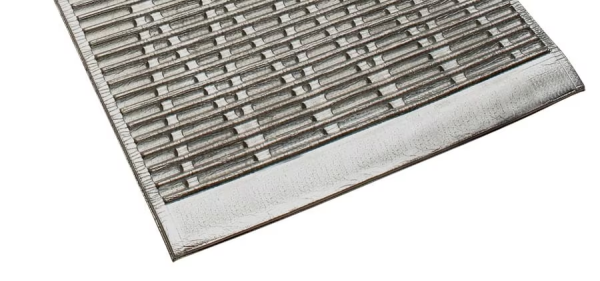
These basic backpacking and camping pads are made of dense foam filled with tiny closed air cells. They’re usually rolled up or folded in a Z formation.
Pros: They’re lightweight, inexpensive, durable, and offer consistent insulation in all conditions. You don’t need to worry about punctures or leaks. They work great underneath other types of pads to improve insulation and prevent punctures. These are the only pads that can be carried on the outside of your pack without fear of damage. They can also double as sit pads in camp.
Cons: They are less comfortable. They’re relatively stiff and firm and tend to be bulky.
Choosing the Best Sleeping Pad for You
Sleeping Pad Quick Comparison
|
Activity |
Type of pad |
Features/Benefits |
|---|---|---|
|
Car camping |
Self-inflating pad or thick air pad |
Lots of cushioning, wide range of available R-values |
| Backpacking/bikepacking/ kayak & canoe touring |
Air pad or lightweight self-inflating pad |
Comfortable, lightweight, packs small, wide range of available R-values |
|
Minimalist backpacking |
Ultralight air pad |
Lightweight, packs small, wide range of available R-values |
|
Thru-hiking |
Closed-cell foam camping mat |
Lightweight and durable |
|
Winter camping |
Well-insulated air pad or self-inflating pad |
High R-value |
When choosing a new sleeping pad, the key factor is the warmth of your overall sleep system (discussed below). It's also helpful to think about your intended end use:
Car camping: When you’re not limited by size and weight, you can choose a thicker, larger mattress for sleeping comfort. Often, these are less expensive than their lightweight counterparts. Self-inflating pads are often good choices for car camping.
(Large inflatable air mattresses are another option if you want to use regular sheets and blankets instead of a sleeping bag. However, these mattresses are relatively heavy and bulky and may lack insulation, so check product specs. A pump is required for proper inflation.)
Backpacking: Those who prefer good sleep comfort when backpacking (or touring by bike, canoe, or kayak) might choose self-inflating or air pads, which offer a variety of thicknesses, durability, insulation value, and weight. Optional chair kits let your self-inflating or air pad do double-duty as a comfortable seat, complete with a backrest. This can be a lightweight luxury for backpackers.
Minimalist backpacking: Low weight and a small packed size override all other factors. An ultralight air pad is probably going to be your best bet. Some insulated full-length air pads now weigh less than a pound. Be sure to look at the pack sizes of your pad options when in the store and factor that into your decision.
Thru-hiking: Here, low weight is important, but durability for the long haul is also key. Closed-cell foam pads are your best bet. Many thru-hikers pick a “short” or “3/4 length” foam pad to save weight (you can lay your empty pack or extra clothing under your feet for a bit of insulation if needed).
Winter camping: An insulated, high R-value air pad works well for cold air temperatures. Camping on snow also requires more insulation. Because R-value is additive, consider using a closed-cell foam pad underneath an insulated, moderate, or high R-value air pad or self-inflating pad. The durable closed-cell foam pad adds insulation and helps protect the inflatable pad from punctures or other damage. It also serves as a backup if the inflatable pad is damaged and cannot be repaired.
Sleeping Pad Warmth
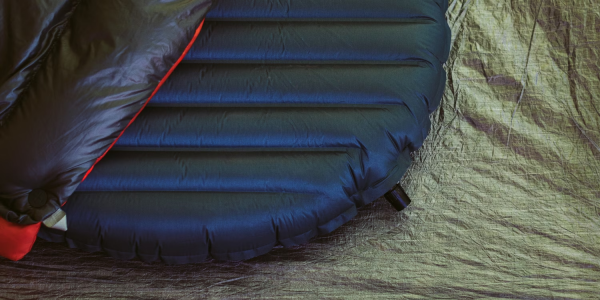
Insulation and R-Value
A sleeping pad's insulation is crucial to a warm night’s sleep because you lose body heat to the cold ground beneath you. To counteract this, pads use a variety of materials and construction techniques to prevent heat loss.
A sleeping pad's R-value measures its capacity to resist heat flow through it (hence the "R"). The higher a pad’s R-value, the better it will insulate you from cold surfaces. Sleeping pad R-values range from less than 2 (minimally insulated) to 5.5 or more (very well insulated).
Manufacturers now have a uniform way to test sleeping pads for R-values, which means you can compare this key spec between any two pads, regardless of the brand, model or type of pad.
Key facts about R-values in sleeping pads:
- Higher numbers mean more insulation.
- The scale is straightforward: A pad with an R-value of 2.0 is twice as warm as a pad with an R-value of 1.0.
- To calculate the total insulation for stacked sleeping pads, simply add their R-values.
Your Sleeping Pad and Bag Work Together
It’s always been true that your real-world warmth and comfort can vary from the tested temperature ratings based on many variables, including humidity, wind, type of shelter, ground conditions, clothing, and personal preferences. The central consideration, though, is your sleep system. A sleep system consists of three basic components: 1) the sleeping bag, 2) the sleeping pad, and 3) the sleeper’s clothing.
If you use a less-insulated pad at colder temps, your sleeping bag might not live up to its temperature rating. It's important to note that a sleeping bag's test rating is based on a person who is wearing long underwear and socks, and is sleeping on an insulated pad with an R-value of approximately 5.5. (Keeping those variables consistent across all tested bags is needed to get accurate measurements.)
We have conducted extensive testing to quantify overall sleep system comfort. Sleeping bags and pads, with varying thermal performance, were measured alone and in different combinations. The simple table below shows recommended sleep system combinations based on expected nighttime low, R-value of the sleeping pad, and the sleeping bag temperature rating.
Sleep Systems: What Sleeping Pad and Sleeping Bag Rating Should I Get?
|
CONDITIONS |
WARM |
COOL |
COLD |
EXTREME |
|---|---|---|---|---|
|
Expected Nighttime Low |
50°F |
32°F |
20°F |
0°F |
|
Pad: R-Value Range |
Under 2 |
2 – 3.9 |
4 – 5.4 |
5.5+ |
|
Bag: Temperature Rating |
30°F or lower |
20°F or lower |
15°F or lower |
0°F or lower |
For the temperature rating of your bag, use its “lower limit” rating if you are a warm sleeper; use its “comfort” rating if you are a cold sleeper.
Sleeping Pad Features
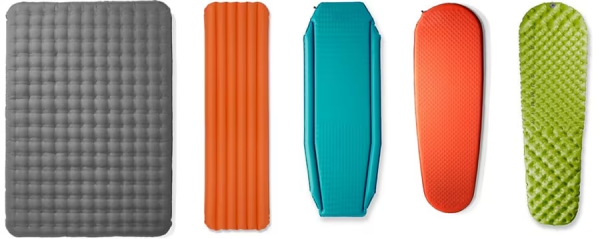
Sleeping Pad Weight
Ultralight pads are excellent for backpacking but are more expensive. You can save weight by choosing a mummy or tapered shape that reduces volume and packs smaller. Closed-cell foam pads in short lengths are also quite low in weight. If you’re backpacking with a partner, a two-person lightweight sleeping pad can save ounces.
Sleeping Pad Length
At a minimum, your shoulders and hips need to fit on a pad. Regular (typically 72 inches long) and long (typically 78-inch) pads will insulate your legs and feet—a big plus on chilly fall and winter trips. A short or 3/4-length pad (usually 47 or 48 inches) weighs less and packs smaller (you can put folded clothing or your pack under your legs and feet for some insulation).
Sleeping Pad Width
Nearly every pad offers a standard width of 20 inches. If you’re a large person or tend to roll around a lot, you may want a width of 25 or 30 inches (but consider the size of your tent to ensure you can fit two wider pads side by side). Often, the “long” version of a pad defaults to being wider as well, though in some styles, you can get a wide pad that is still “regular” length.
Some pads have larger side baffles, often called “rails,” to cradle you and help keep you from rolling off as you turn during sleep. These are especially nice for children.
Sleeping Pad Inflation
Some pads have both a high-volume inflation valve and a deflation valve, which can speed air flow in or out. Some new pads have larger “neck” openings that allow fast inflation with fewer breaths. Pads with separate inflation chambers or layers can give you peace of mind; if one layer fails, the other will still give you some cushioning.
Sleeping Pad Surfaces
If you're a restless sleeper, look for a pad with a textured or brushed-fabric surface. This helps keep you and your sleeping bag from sliding off during the night. It might also be quieter.
Additional Sleeping Pad Considerations
Pad sleeves: Some sleeping bags have an integrated sleeve to hold a pad. This keeps you and your sleeping bag from sliding off in the night. Check the sleeve width before you buy a pad.
Hand pumps: If you don’t like expending breath after a long day of hiking, look for a pad with an integrated hand pump or purchase a bag-style hand pump that rolls up small and weighs only a couple of ounces (sold separately).
Patch kits are a good idea for backpacking. Find out whether they come with the pad or are sold separately. Be sure to understand how to patch a puncture before you leave home, in case you have to repair one in the dark.













